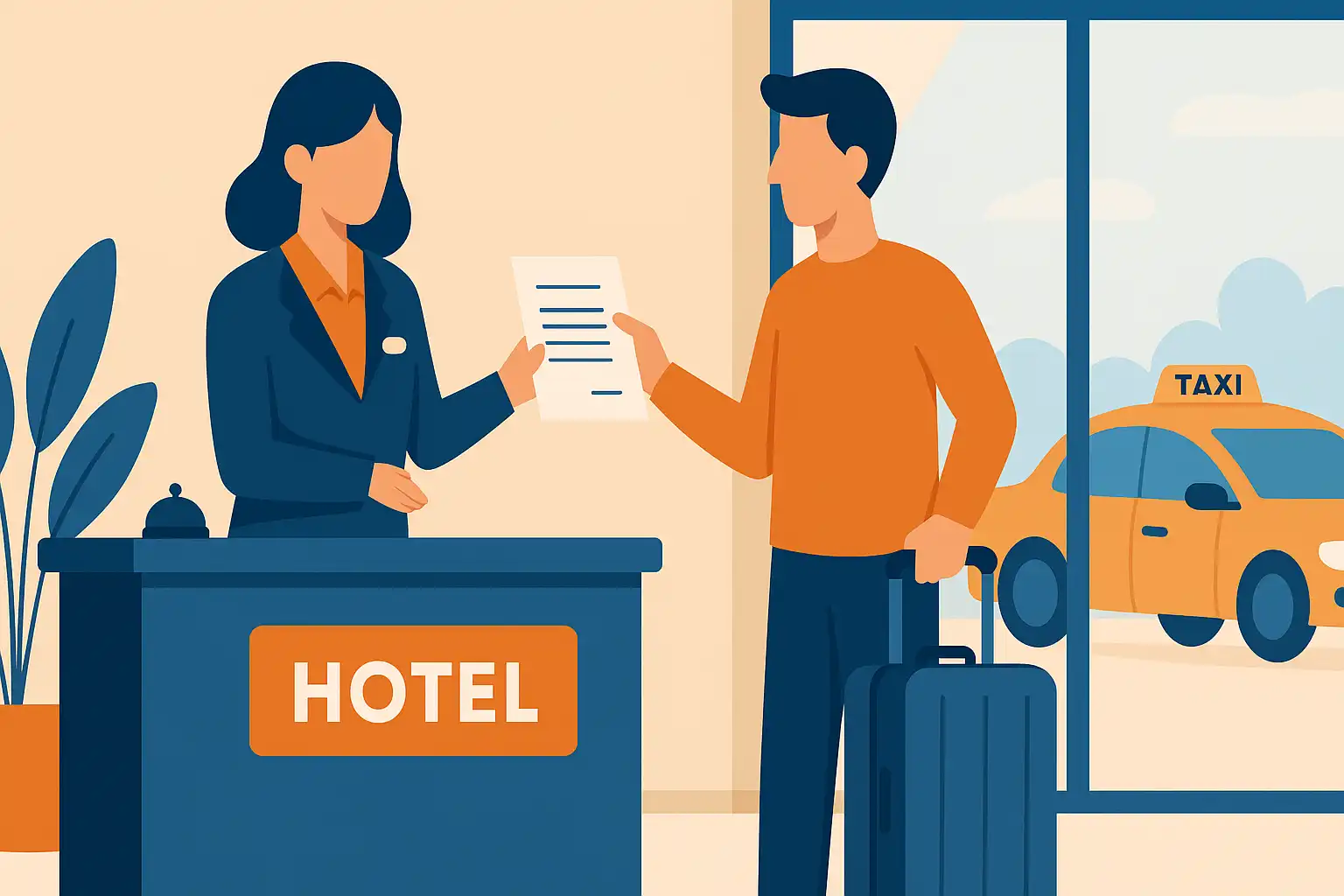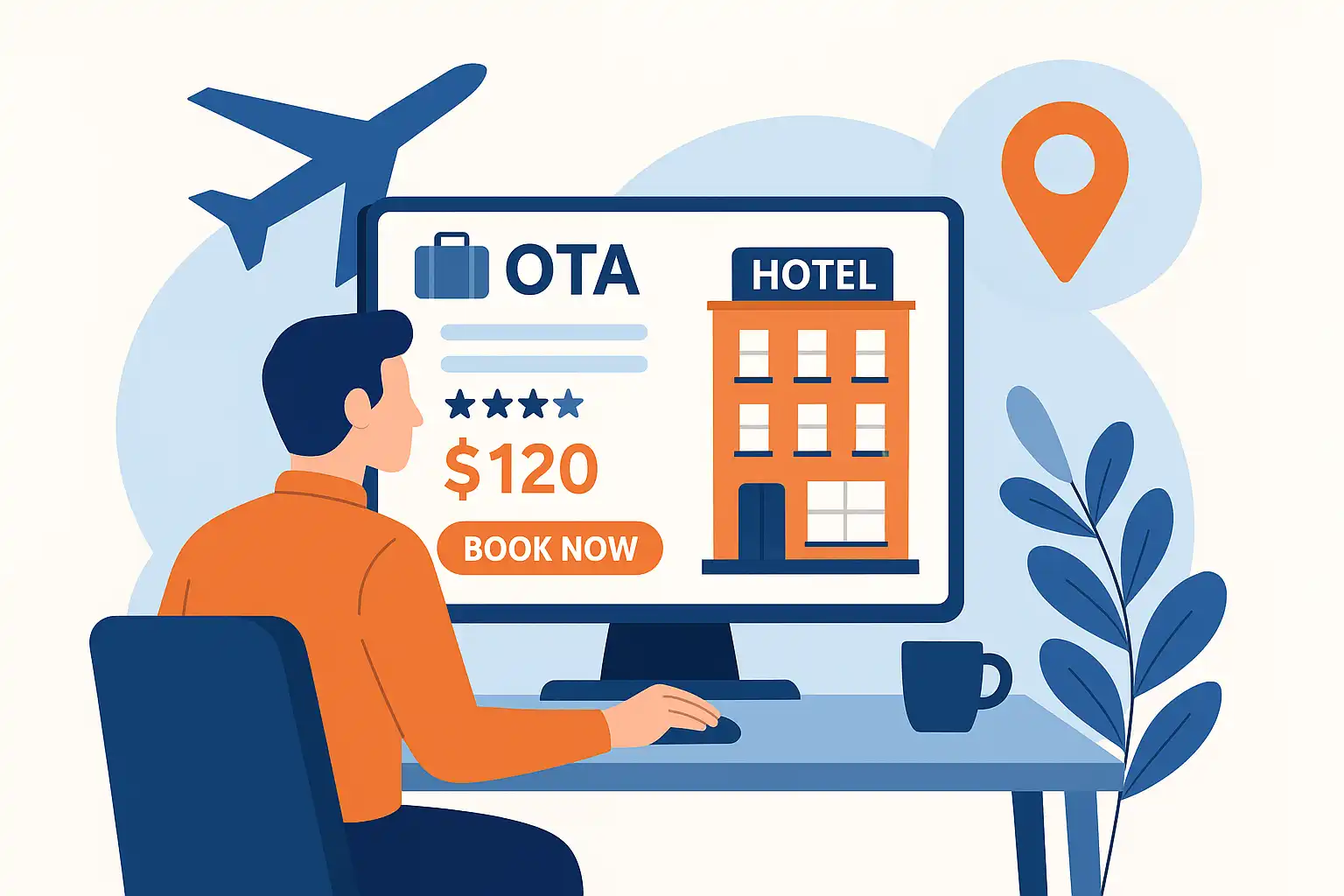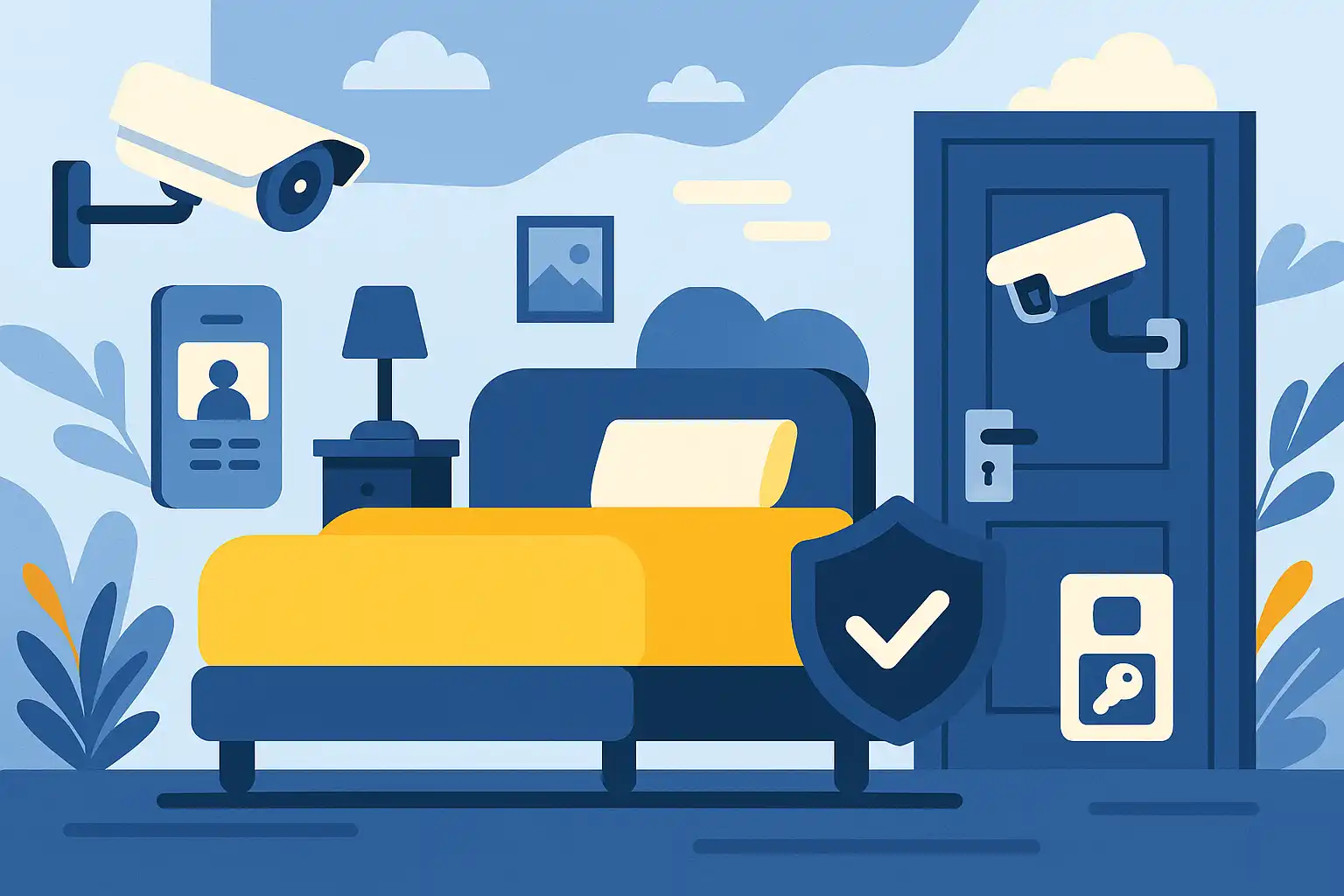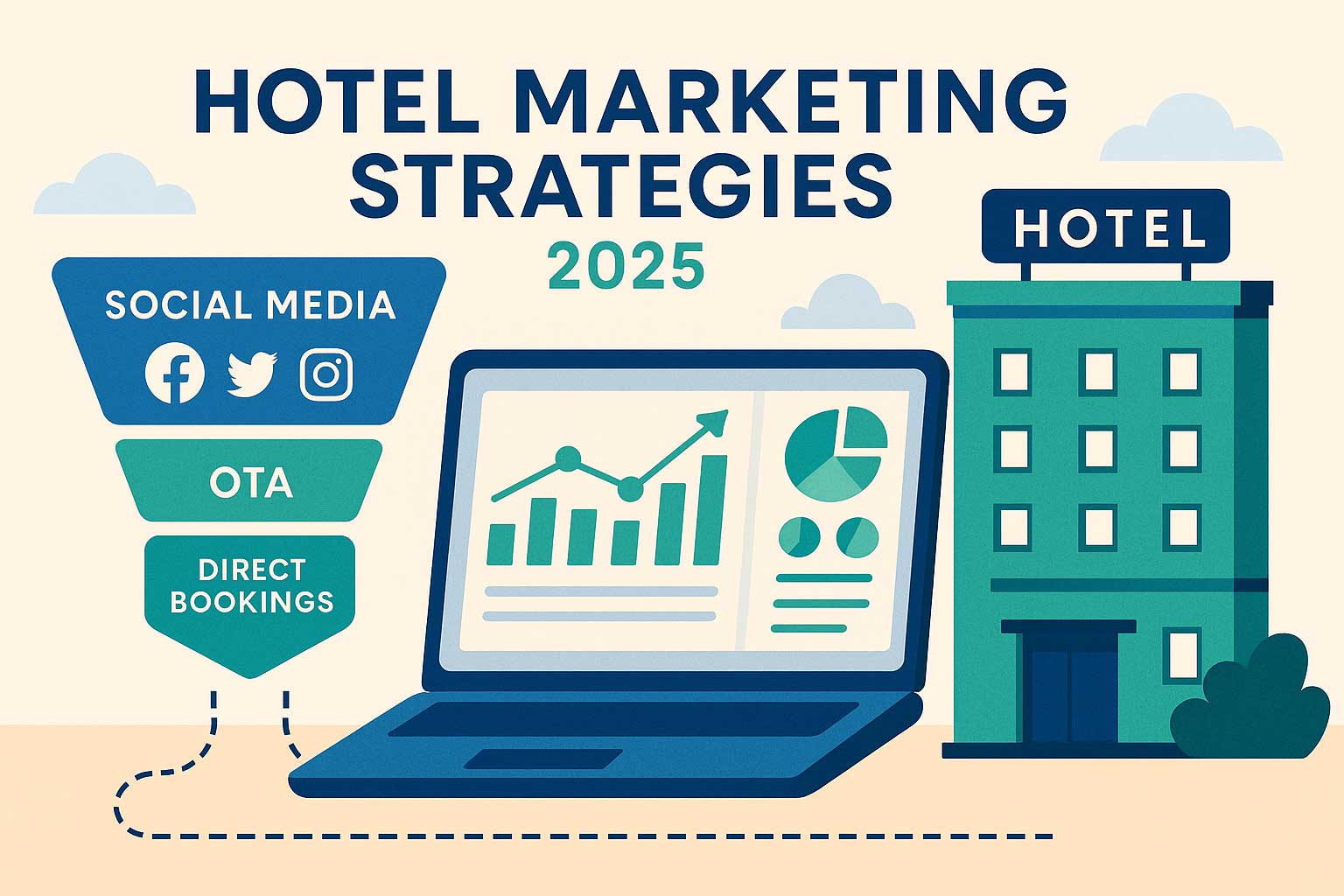PMS Migration: Complete Guide to Successfully Switching Your Property Management System
Jul 24, 2025
 Mika Takahashi
Mika TakahashiPopular Categories
Hotel Technology & InnovationHotel Operations OptimizationDigital MarketingIndustry TrendsRevenue ManagementHospitality Industry
Popular Categories
Trending Post

Hotel Walk Letter Template: Professional Guest Communication

Online Travel Agents: What They Are and How They Work

Hotel Security Systems: Modern Protection Solutions

Hotel Advertising: Complete Guide to Boost Bookings and Revenue

25 Hotel Marketing Strategy Ideas for 2025: Complete Guide

AI Reservation Agent: Revolutionizing Hotel Booking and Guest Experience

PMS Communication: Streamlining Property Management Through Effective Guest Messaging
Table of contents
With 58% of hospitality executives believing cloud solutions make business more flexible, the move from legacy property management systems to modern cloud based solutions is no longer a trend – it’s a business imperative. If you’re a hotel owner or manager thinking of migrating to a new pms you’re probably weighing up the operational benefits against the complexity of switching systems that run your daily operations.
Migrating from your current pms to a new one like Prostay is a big undertaking that can be a huge benefit to your hotel operations when done right. But it requires planning, resources and a deep understanding of the pros and cons.
This guide will take you through every step of the pms migration process from planning to post migration support so you can make an informed decision on whether migrating to a cloud based pms is right for your property.
Understanding PMS Migration
The process of migrating from an existing property management system (PMS) to a new system involves moving from an outdated or on-premise solution to a cloud-based system that provides better functionality and integration capabilities. The process includes moving essential operational data such as reservations, guest profiles and financial records and connecting different hospitality industry technologies.
Common Triggers for Migration
Hotels usually consider migrating their property management system when they encounter several key limitations.
Out of date and not meeting guest expectations and modern hotel operations. Legacy pms systems don’t have mobile support, real time reporting and automated processes that today’s hoteliers expect.
Integration issues preventing seamless connection with multiple systems including channel managers, payment processors and revenue management tools. When your current system can’t talk to other key systems it creates operational bottlenecks.
Poor support leaving property owners to deal with maintenance and system issues on their own. A proven track record of good support is key when things go wrong during peak season.
Scaling issues that prevent businesses from growing or adapting to market changes. As properties grow or guest expectations change inflexible systems become operational liabilities.
Benefits of Modern Cloud-Based PMS
The benefits of migrating to cloud based software like Prostay extend far beyond just functionality:
Real-time access to pms data from anywhere means remote management and faster decision making. Property owners and managers can see how the business is performing and respond to operational needs wherever they are.
Better integration through open APIs means you can connect with pms providers and third-party systems seamlessly, creating a unified ecosystem of technology that is a unified ecosystem of technology.
Automatic updates and maintenance means no more manual system updates and reduced IT infrastructure, so staff can focus on guest experience not technical maintenance tasks.
Improved security means your data is protected by enterprise grade encryption and regular security updates, so you’re compliant with data protection regulations.
Cost effective means reduced hardware requirements and predictable subscription pricing so you can plan your budget for businesses of all sizes.
Planning Your PMS Migration Strategy
A successful migration strategy starts with developing a detailed roadmap which defines specific timelines and milestones together with assigned responsibilities. The planning phase which we previously identified as essential for migration success needs to start weeks before any data transfer process begins.
Creating Your Migration Team
A successful pms migration requires involving multiple departments and teams:
- Front desk operations to ensure guest-facing processes remain smooth
- Revenue management to maintain pricing and inventory accuracy
- Housekeeping to preserve room status and maintenance workflows
- Finance to ensure accurate reporting and payment processing
- IT to manage technical aspects and system integration
Designating a dedicated migration project leader ensures accountability and maintains project momentum throughout the process. This team member should have authority to make decisions and coordinate between departments while reporting daily directly to the hotel General Manager.
Setting Realistic Timelines
A normal migration process takes 1 to 3 months depending on property size and specific requirements. With experience in countless migration projects, Prostay hospitality professionals recommend avoiding tight and aggressive deadlines for migrations that might compromise not only the integrity of the hotels's data but more importantly the quality of the staff training.
Optimal timing considerations:
- Schedule during off-season or shoulder months to minimize impact on operations
- Avoid peak booking periods when system disruptions could affect revenue
- Allow buffer time for unexpected challenges or additional training needs
- Coordinate with your onboarding team to ensure adequate support availability
Pre-Migration Assessment and Preparation
A complete evaluation of your current system's limitations should precede data migration to determine specific needs for your future pms. The assessment process requires participation from all departments to guarantee the new cloud based pms fulfills operational needs throughout your property.
Evaluating Current System Limitations
Document existing pain points including:
- Reporting limitations that prevent effective business analysis
- Integration failures with essential systems
- User interface issues that slow daily operations
- Support problems that impact business continuity
- Scalability constraints limiting growth opportunities
Data Cleaning and Backup Procedures
Clean, organized data ensures smooth transition and maintains data integrity throughout the hotel pms migration process. The more unorganized and messy the hotel data is, the more difficult and timely the migration will be. This preparation involves:
Guest profiles review: Identify and merge duplicate records, update outdated information, and ensure consistent formatting across all guest data.
Reservation data validation: Verify future reservations accuracy, confirm rate structures, and validate special requests or preferences.
Financial records organization: Ensure all transactions are properly recorded and reconciled before transfer to maintain accurate reporting in your new system.
Infrastructure Assessment
For cloud migration, evaluate your property’s technical readiness:
- Internet bandwidth sufficient for cloud based operations - most cloud pms systems such as Prostay do not require powerful internet connections but it is recommended to have a suitable one
- Network reliability to ensure consistent system access - not all cloud pms software offer an off-line mode so the stability of your internet network is important. Prostay offers a fully functional off-line mode that allows you to run your hotel operations regardless of your internet connection.
- Device compatibility with new software requirements
- Security protocols appropriate for cloud based software
Data Migration and Transfer Process
The data migration phase is the most important part of switching to a new pms. This involves exporting all relevant data from your old pms and importing it into your new cloud based system while keeping data integrity throughout the process.
Types of Data to Migrate
Guest information: Guest profiles including stay history, preferences, contact details and loyalty program status are the foundation of personalized service.
Reservation data: Active and future reservations with all associated details including rates, special requests and payment information must transfer correctly to avoid booking errors.
Financial records: Historical transaction data, folios and accounting information to maintain continuity in financial reporting and guest billing.
Operational data: Room configurations, rate structures, package details and inventory settings to maintain consistency in daily operations.
Migration Approach: Full vs Selective Transfer
Property owners have a big decision to make regarding data scope:
Full historical migration provides continuity of guest relationships and full analytics but takes more time, resources and is more complex. This is suitable for properties with large guest databases and long operational history.
Selective migration focusing on recent and essential data is faster to implement with less risk but sacrifices easy access to historical data. This is good for newer properties or those who want to implement quickly.
Protecting Guest Data During Migration
Guest data protection requires strict adherence to regulations including GDPR and CCPA throughout the migration process. Key considerations are:
Encrypted transfers: All confidential data must be encrypted during transfer between systems to prevent unauthorized access.
Access controls: Limit migration access to essential team members with the right authorization levels.
Compliance documentation: Keep detailed records of data handling procedures to prove regulatory compliance.
International considerations: Properties handling international guest data must ensure cloud based solutions comply with cross border data transfer regulations.
System Integration and Connectivity
Migrating to a new pms is not just about data transfer, it’s about seamless integration with your existing hotel technology ecosystem. Your new cloud pms must talk to multiple systems to keep things running smoothly.
Key Integration Points
Channel management systems to sync rates and availability across all channels, to avoid overbooking or pricing errors that impact revenue.
Payment processing to secure transactions and financial reporting, for guest experience and business operations.
Guest communication platforms to preserve automated messaging and guest engagement workflows for customer experience.
Revenue management tools to continue dynamic pricing and demand forecasting for business performance.
Test Integration Before Go Live
Comprehensive testing to avoid disruptions when your new system goes live. Testing should be done in a controlled environment using live property data to identify issues before they impact guest experience.
Integration testing steps:
- Verify data flow between systems
- Test transaction processing
- Check reporting
- Validate workflows
- Test error handling
Training and Staff Adoption
Proper staff training ensures a smooth transition and gets the most out of your new cloud based pms. Training should cater for different learning styles and provide ongoing support resources.
Comprehensive Training Approach
Role specific training focuses on the features and workflows relevant to each department’s daily tasks so staff can do their job without unnecessary complexity.
Hands on practice in a sandbox environment allows staff to get comfortable with the new software before they have to handle real guest interactions or business transactions.
Multilingual support so all team members can use the new system regardless of language preference and promote adoption across diverse hotel teams.
Training Resources and Support
Modern pms providers like Prostay offer multiple training formats:
- Video tutorials for self paced learning
- Live training for interactive guidance
- User guides for reference documentation
- Online help for ongoing support
Going Live and Post-Migration Support
The final system switch represents the culmination of your migration strategy and requires careful coordination to minimize operational disruption. When properly planned, the actual switchover takes approximately 30 minutes with minimal downtime.
Pre-Activation Checklist
Before activating your new cloud based system:
- Verify all essential features are configured correctly
- Confirm integration connections are operational
- Test critical workflows with sample data
- Ensure staff training is complete
- Validate backup procedures are in place
Immediate Post-Migration Period
The first few hours and days after migration are critical for identifying and resolving any unexpected issues. Expect to invest additional time monitoring system performance and providing extra support to staff members adapting to new processes.
Key focus areas:
- Guest check-in/check-out procedures
- Reservation management accuracy
- Payment processing functionality
- Reporting and analytics access
- Integration performance monitoring
Ongoing Support and Optimization
Post migration support extends beyond initial implementation to include continuous improvement opportunities. Regular system reviews help identify optimization possibilities and ensure you’re maximizing the operational benefits of your new pms.
Migration Timeline and Costs
Understanding the financial investment and time commitment required for pms migration helps property owners make informed decisions and plan appropriately for the transition process.
Typical Timeline Breakdown
| Phase | Duration | Key Activities |
|---|---|---|
| Planning & Assessment | 1-2 weeks | System evaluation, team assembly, vendor selection |
| Data Preparation | 1-2 weeks | Data cleaning, backup procedures, infrastructure assessment |
| Configuration & Setup | 1-2 weeks | System configuration, integration setup, testing |
| Training | 1-2 weeks | Staff training, documentation review, practice sessions |
| Go-Live & Stabilization | 1 week | System activation, monitoring, issue resolution |
Cost Components
Migration and setup fees typically range from $1,000 to $10,000+ depending on property size, data complexity, and integration requirements.
Training costs can represent up to 20% of total project investment, particularly for larger properties with extensive staff training needs.
Subscription fees for cloud pms solutions typically range from $50-$500+ per room annually, depending on features and support levels.
Potential downtime costs should be minimized through careful planning, but properties should budget for possible revenue impact during the transition period.
Return on Investment
The business benefits of migrating to a modern cloud based pms typically include:
- Reduced IT infrastructure and maintenance costs
- Improved operational efficiency and staff productivity
- Enhanced revenue management capabilities
- Better guest experience leading to increased satisfaction
- Scalability supporting business growth
Risk Management and Mitigation
Every pms migration comes with inherent risks that can affect hotel operations if not managed properly. Knowing these risks and having mitigation strategies in place ensures a smooth transition and business continuity.
Common Migration Risks
Data integrity issues lost reservations, corrupted guest profiles or inaccurate financial records can impact operations and guest experience.
Integration failures preventing communication between your new pms and other key systems can disrupt booking processes and revenue management.
Staff adoption challenges can slow down operations and increase errors if team members struggle with new processes or lack training.
Operational disruptions during the transition period can affect guest experience and revenue if not managed properly.
Risk Mitigation Strategies
Full backup procedures so you can restore operations if critical issues arise during migration. Keep full backups of all data and configuration settings.
Parallel system operation during initial phases allows for fallback options if something goes wrong with the new system.
Phased implementation reduces risk by transitioning different parts of the operation at a time rather than everything at once.
Vendor support coordination so you have expert help available when you need it, especially during go-live.
Measuring Migration Success
Assessing your pms migration requires monitoring both numbers and feel across hotel operations. This will validate the investment and show where to optimise further.
Key Performance Indicators
System uptime measured through percentages and response times shows how stable your new cloud pms is.
Operational efficiency improvements like faster check in, less manual data entry and streamlined processes mean it’s working.
Staff productivity gains measured through task completion times and reduced training for new staff shows the system is more user friendly.
Guest satisfaction metrics like feedback scores and service delivery consistency shows the impact on customer experience.
Continuous Improvement Opportunities
Regular reviews with your pms provider will help you identify new features, integrations and optimisation opportunities to get more out of the system.
Monthly reviews tracking key metrics will show trends and opportunities to improve.
Staff feedback sessions will give you insight into user experience and workflow improvements.
Guest feedback analysis will show where the system can improve customer experience.
Conclusion
PMS migration is a chance to modernise your hotel, enhance the guest experience and improve your business. While it requires planning, resources and commitment from your whole team, the operational benefits of moving to a modern cloud based pms like Prostay will transform your property’s efficiency and competitiveness.
The key to success is thorough preparation, realistic timelines, comprehensive staff training and ongoing support from experienced pms providers. By reading this guide you will be able to make an informed decision as to whether pms migration is right for your property and your resources.
Remember migration success goes beyond the initial implementation to ongoing optimisation and staff development. Properties that plan properly and focus on continuous improvement will get the greatest return on their investment.
If you’re looking to move to a new pms, evaluate providers like Prostay that offer full migration support, proven track record and the features to stay competitive in the hospitality industry.
